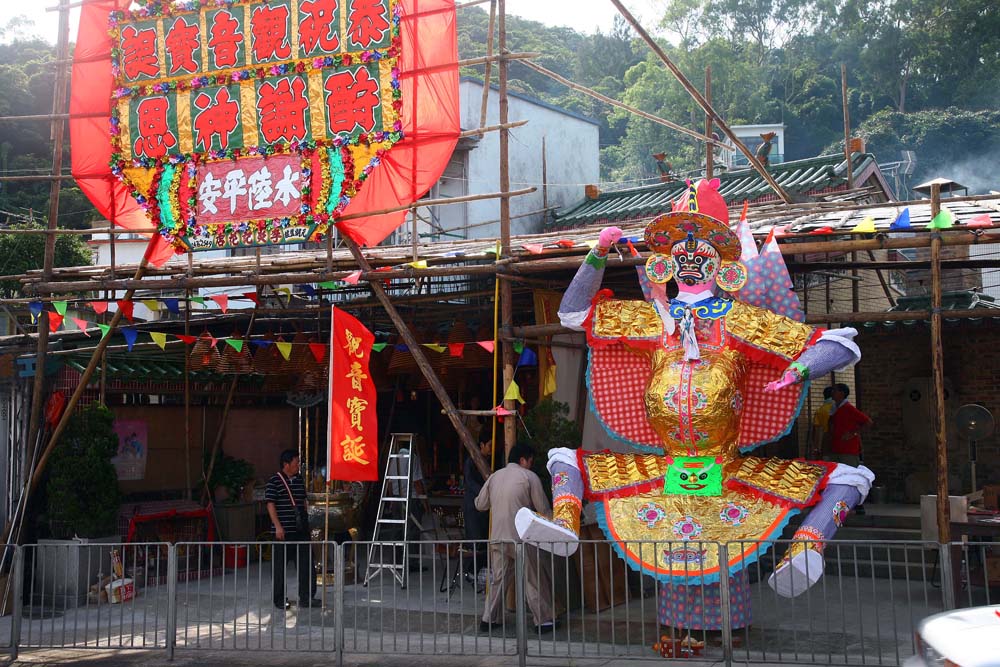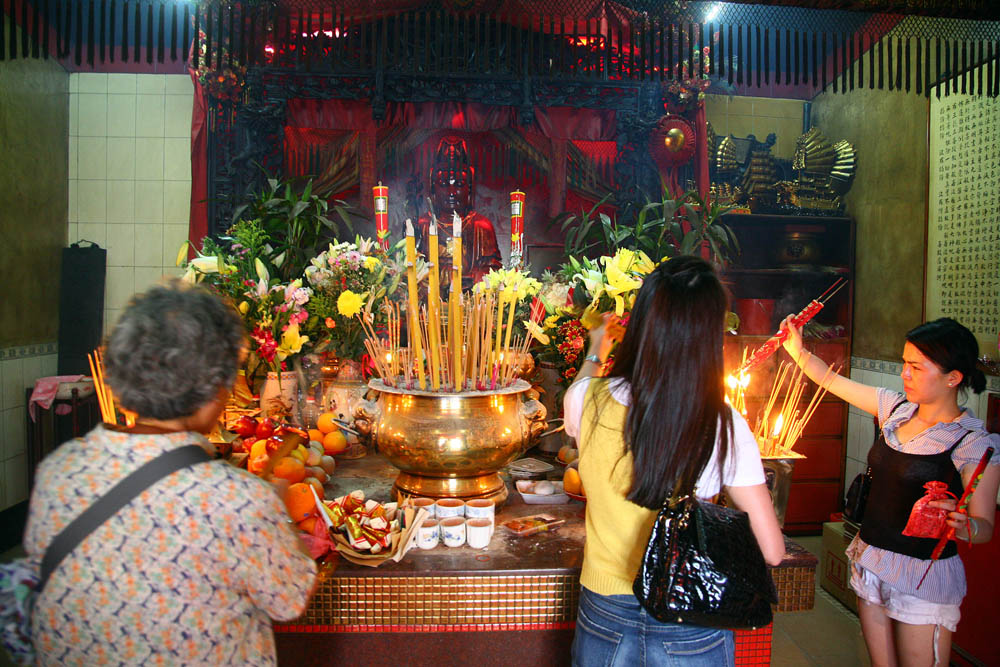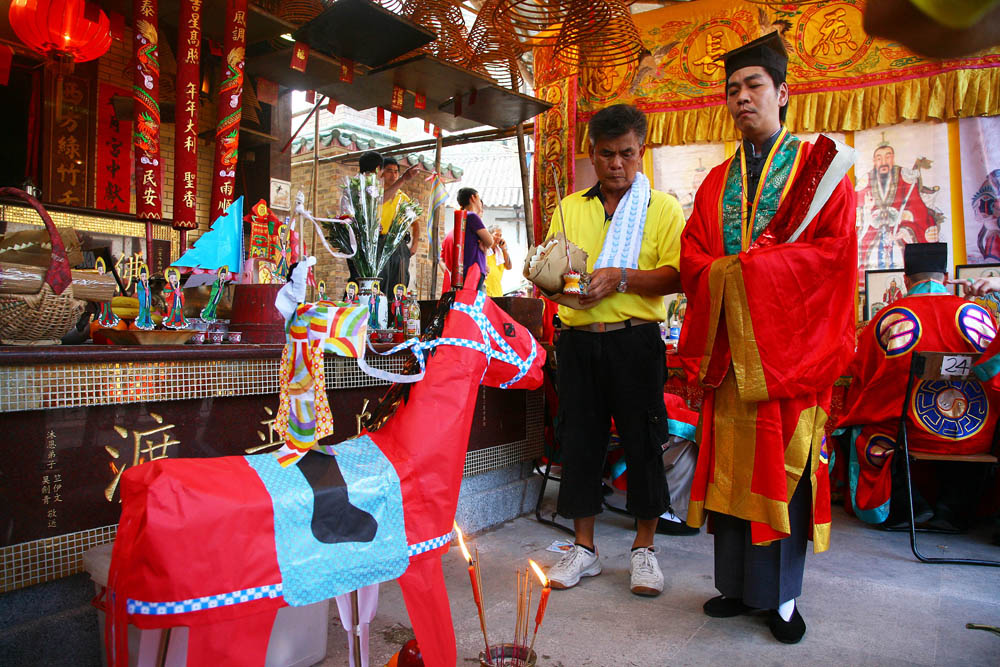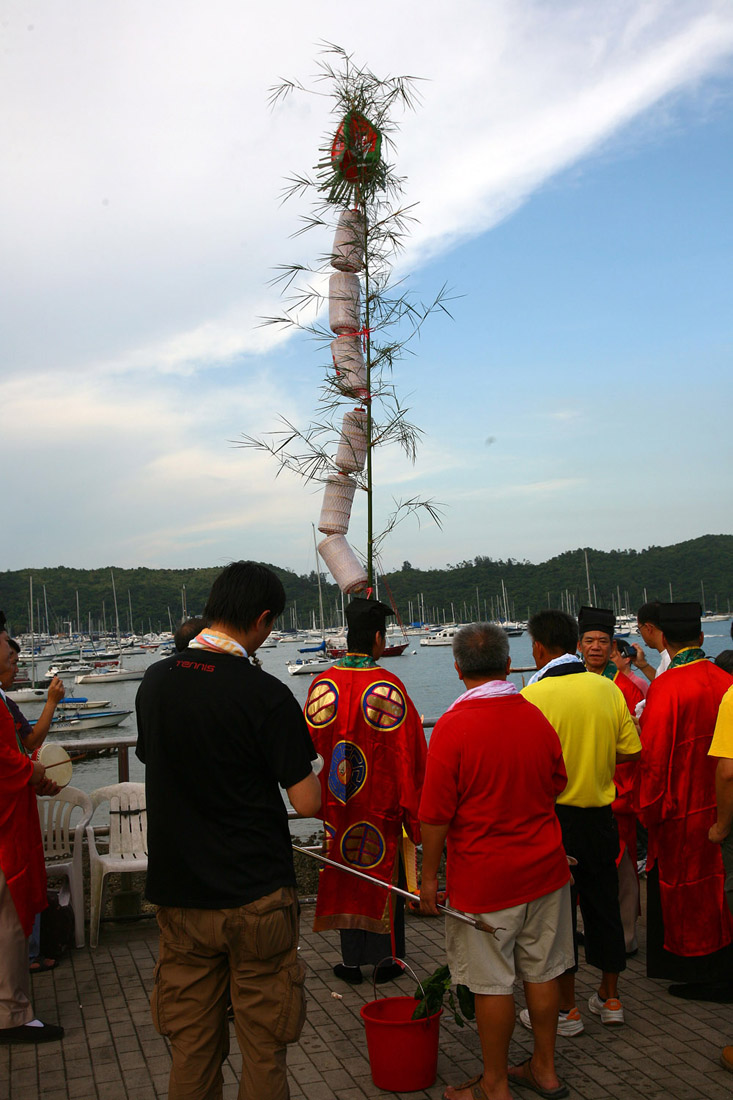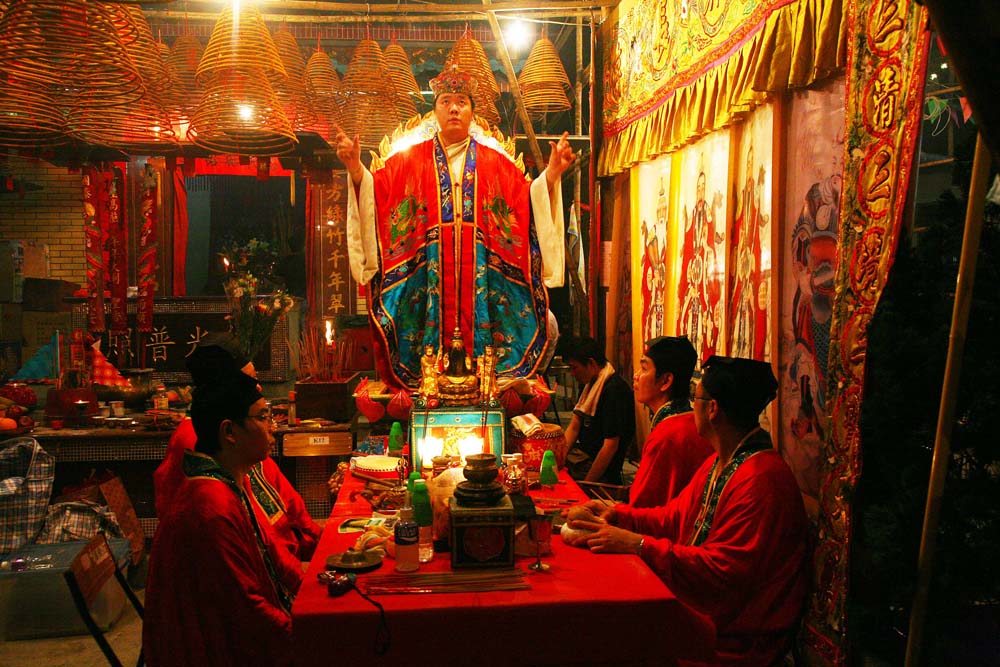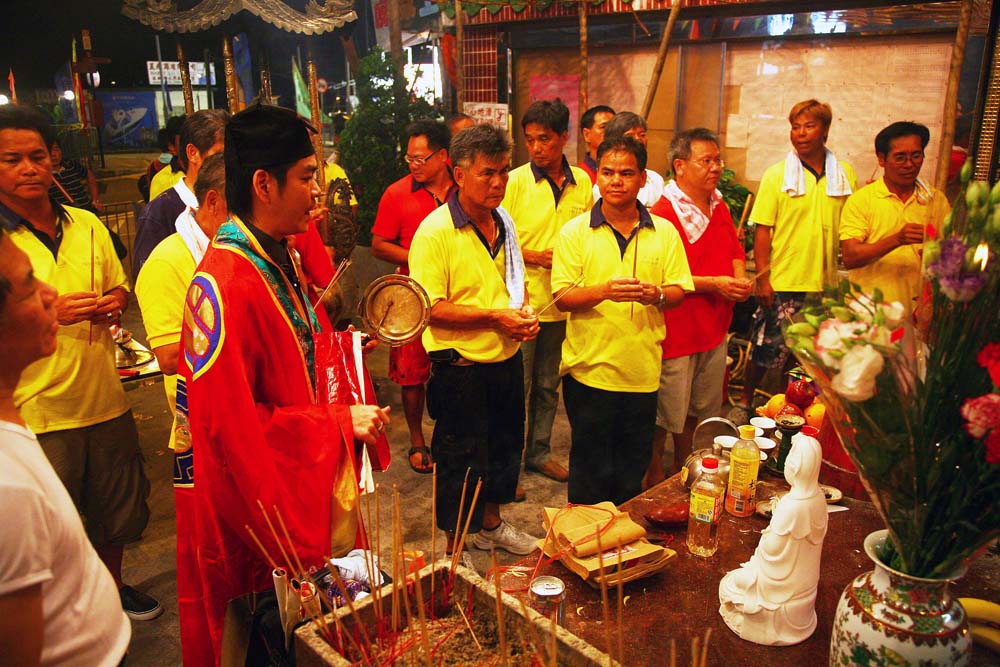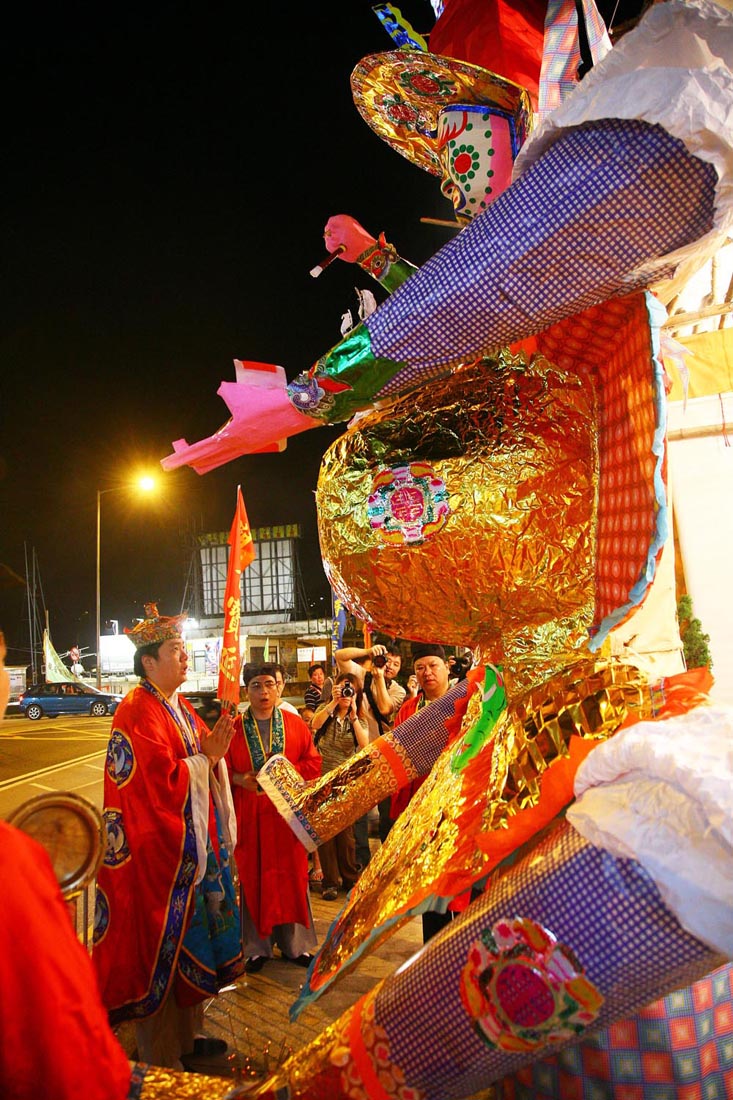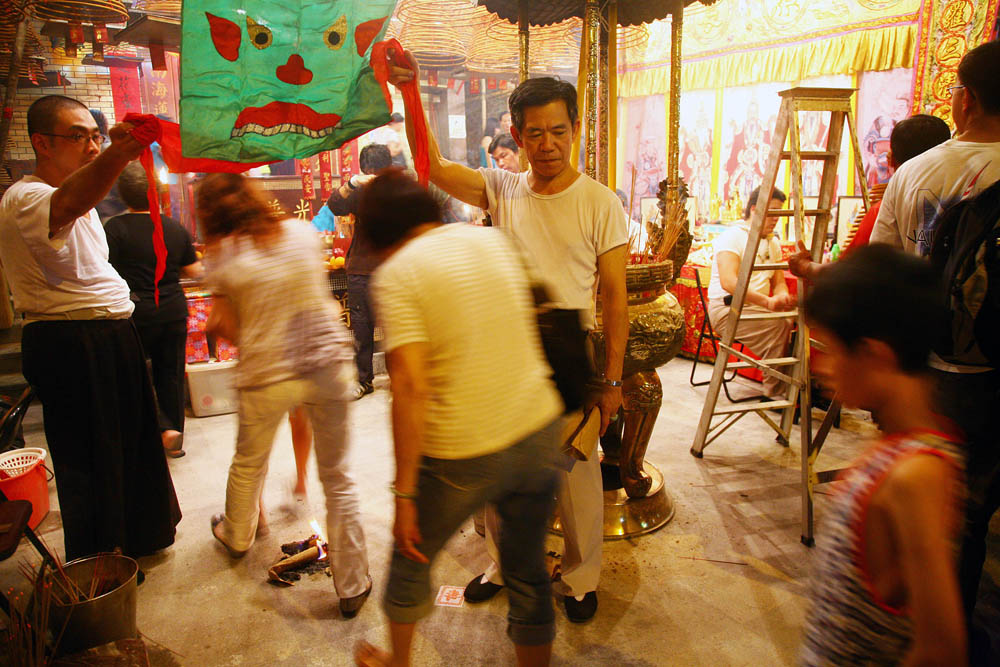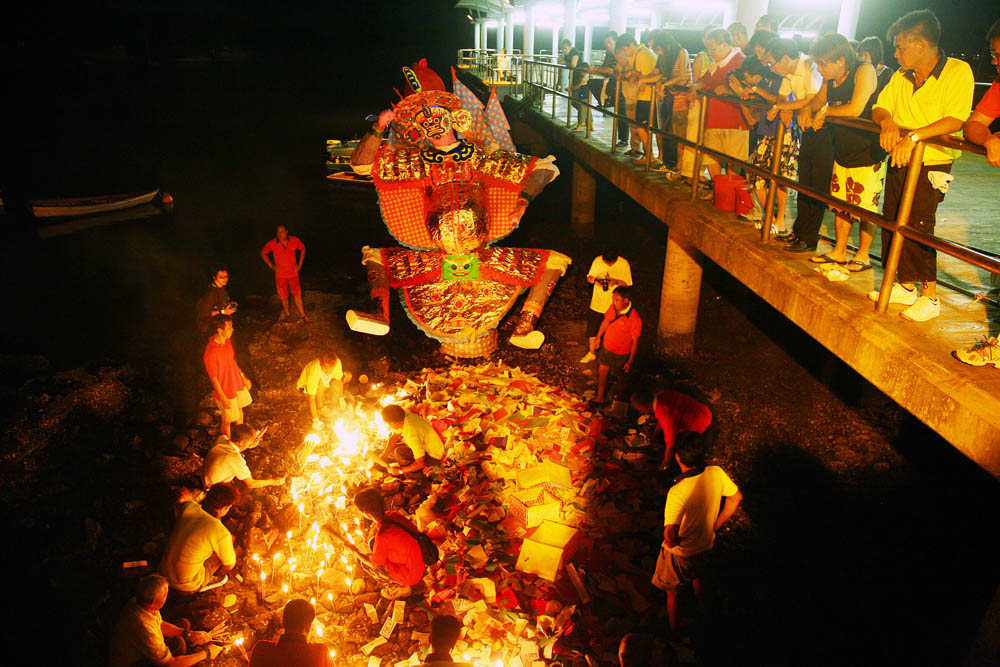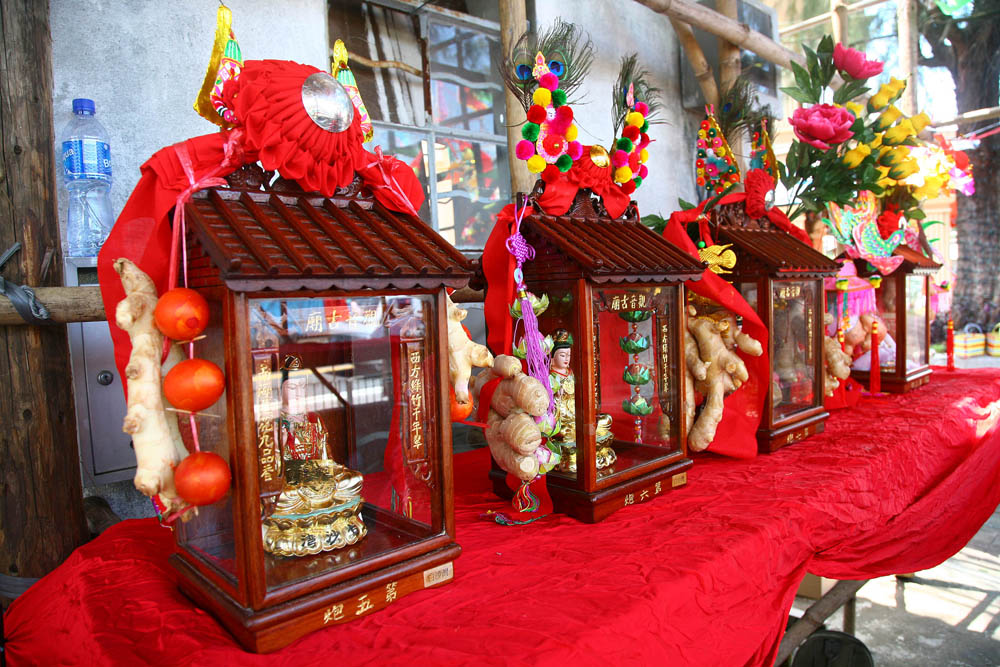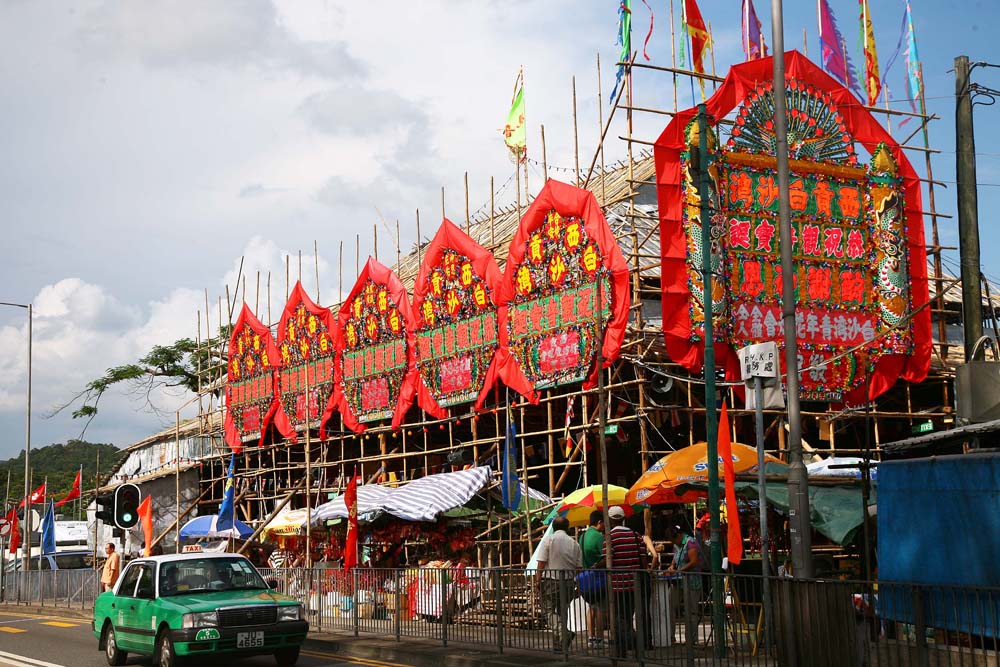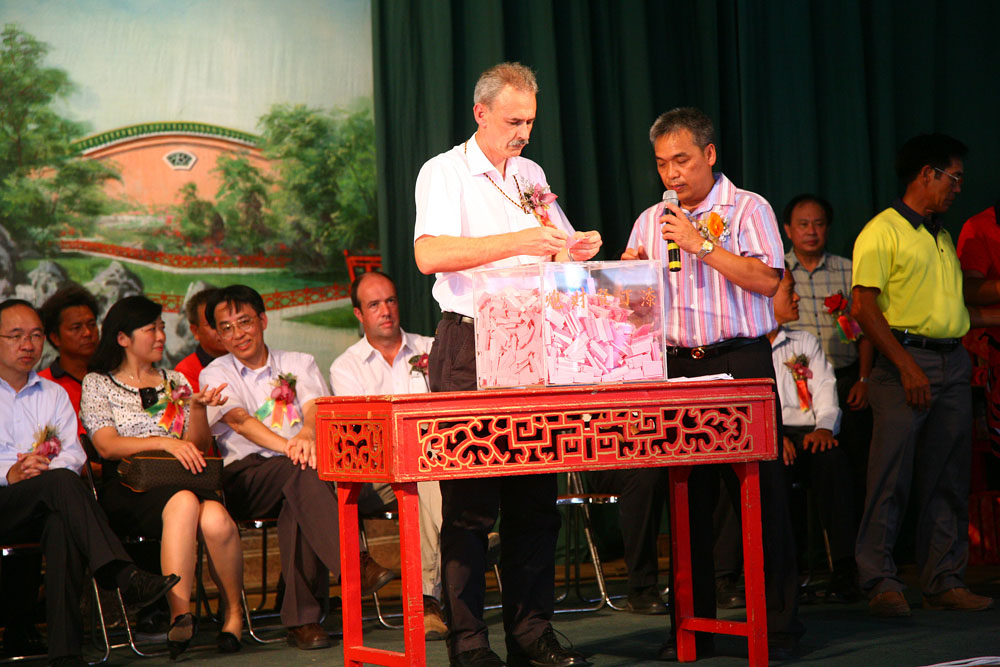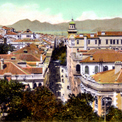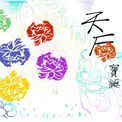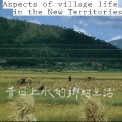-
The 19th day of the 6th month of the Lunar Calendar
Traditionally there are four festivals related to Kwun Yam (Avalokite?vara Boddhisattva/Goddess of Mercy) on the 19th of the 2nd month, 19th of 6th month, 19th of 9th month and 19th of 11th month of the Lunar Calendar respectively. 19th of the 2nd Lunar Month is the birthday of Kwun Yam and most worshippers worship on this day. For those fishermen at Pak Sha Wan Village in Sai Kung, they celebrate the birthday of Kwun Yam on 19th of the 6th Lunar Month, the day on which Kwun Yam attained the Way. Comprised of the Jiao Taoist Tsiu ritual and celebration of birth, the festival lasted two days along with a five-day live Chinese operas and dramas performance for ghosts. Pak Sha Wan was the only place in Hong Kong where a shed would be built for the traditional opera performance to celebrate Kwun Yam’s birthday. The festive atmosphere was particularly strong here.
-
The Day of Kwun Yam attained the Tao (the saintly and godly status)
As a deity worshipped by Buddhists and Taoists alike, Kwun Yam had a wide range of worshippers. There is a Kwun Yam temple at Pak Sha Wan Village which is located by Sai Kung Highway. It has a history of nearly one hundred years and enjoys piety from residents both on land and on water. Why villagers of the early years chose to celebrate Kwun Yam’s birthday on the day when she attained the Tao (the saintly and godly status) ? There are two possible reasons: first, there was only a short interval between the birthday of Kwun Yam on 19th of the 2nd Lunar Month and the Lunar New Year. Fishermen found it financially difficult to hold another festival right after it; secondly, the 6th Lunar Month was a typhoon season, when fishermen would return from the sea and rest in Sai Kung, leaving them a free time to organize the event. Proposal of celebrating Kwun Yam’s birthday on 19th of the 9th Lunar Month to avoid engagement with bad weather during the summer season was once made but rejected as no positive answer was given when villagers tried to seek approval from deities.
-
The Tsiu Ritual before the Celebration of Birth
On 18th of the 6th Lunar Month, Taoist priests were commissioned by villagers to hold the tsiu ritual to make offerings to wandering spirits and the deceased. As time changes, the ritual has been simplified. At around four o’clock in the afternoon, altars were built and at around ten in the evening, the burning of Tai See Wong (the King of the Spirits) marked the end of the entire ceremony which lasted only six hours. It is perhaps the briefest Taoist tsiu ritual in Hong Kong.
-
The whole services of Taoist ceremony including making offerings to wandering spirits, eliminating calamities and misfortunes, offering blessings to people, overcoming difficulties and obstacles, chanting of scriptures for the deceased and feeding them could be completed within half day because of such tight schedule. With the exception of the ceremonies of making offerings to wandering spirits and the burning of Tai See Wong, all other were conducted at the temporary tsiu altar in front of the temples.
-
The Ceremony of Kuo Kwan (literally: ‘passing the gate’)
“Kuo Kwan” was a custom prevalent among the boat people, which had the most participants and children are actively involved. Villagers believed that children who had gone through this ceremony will be smart, good at study and grow up healthily. During the ceremony, participants followed instructions of the Taoist priests to line up in front of the “gate of barrier”, each holding incense sticks. A priest would then throw divination blocks for everyone to request indications from god. Then he spoke to another priest who played the role of a gate-guarding general and the conversation between them reveals to participants the benefits brought by the ceremony. Then he led the villagers to march one by one through a curtain with a figure of devil, during which the villagers also needed to step over the burning ritual paper money on the ground. Participants needed to line up again to do the same thing for another four times to finish the entire ceremony. The five times of the ritual represented the five orientations of metal, wood, water, fire and earth.
-
-
The Cremation of Tai See Wong
The climax of the tsiu ritual was the cremation of Tai See Wong. Ritual committee members carried the statue of Tai See Wong to the beach at the wharf beside the road. Ritual paper money and candles were placed in front of the statue. Fire would be lit after the Taoist priests finished chanting. Tai See Wong was responsible for supervision and controlling of the wandering spirits and ghosts, the burning of whom signifies the departure of spirits and ghosts under Tai Si Wong’s lead, thus resuming the “purity” among the community. At about eleven o’clock at night, committee members assembled at the Kwun Yam temple to burn incense and offer their worship. By now the tsiu ritual had come to an end and the birthday celebration began.
-
Returning Cannons and Celebrating the Birthday
On the morning of 19th of the 6th Lunar Month, villagers came to return cannons (deity images without flower-cannon). Lion dance troupes also came and offered incense. Worshippers brought such offerings as roast pigs, red eggs, raw giner and Kwun Yam costumes for worshipping at the temple. A total of 33 Kwun Yam statues returned by worshippers were put into glass shrines and placed in the flower cannon shed in a proper order. In the afternoon, the person in charge from the committee together with guests held a lottery of flower cannons upon the completion of three auspicious Chinese Opera shows. Nowadays, people who bought more tickets had a better chance of winning, which greatly reduced the competiveness and the atmosphere was less dense than the event of grabbing the flower-cannons.


